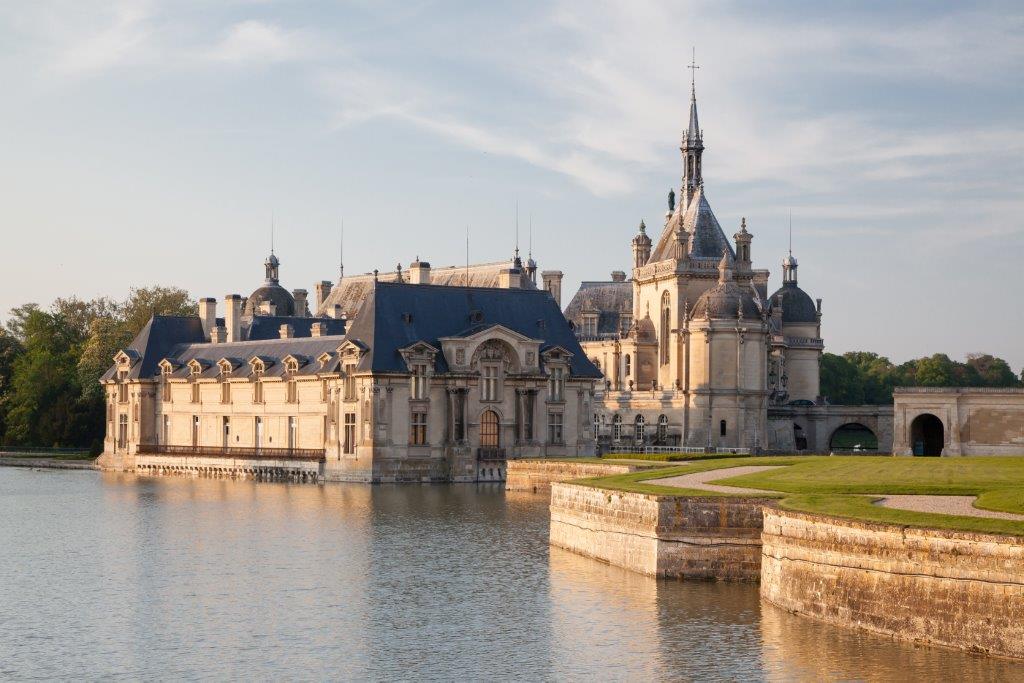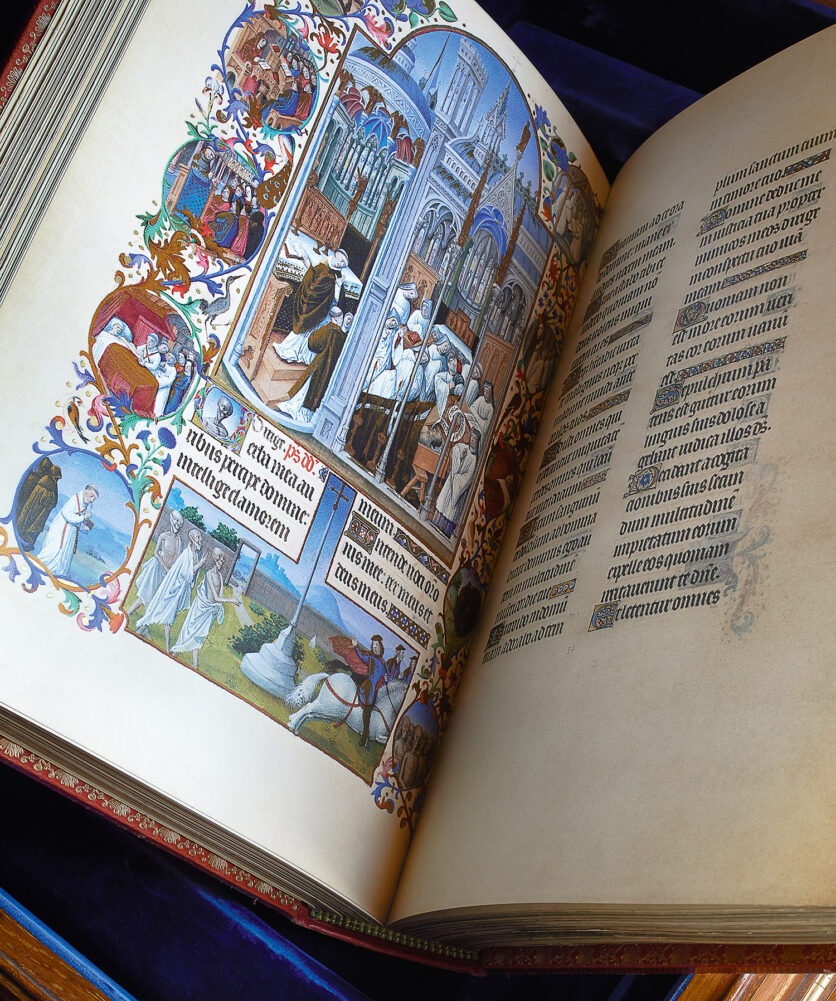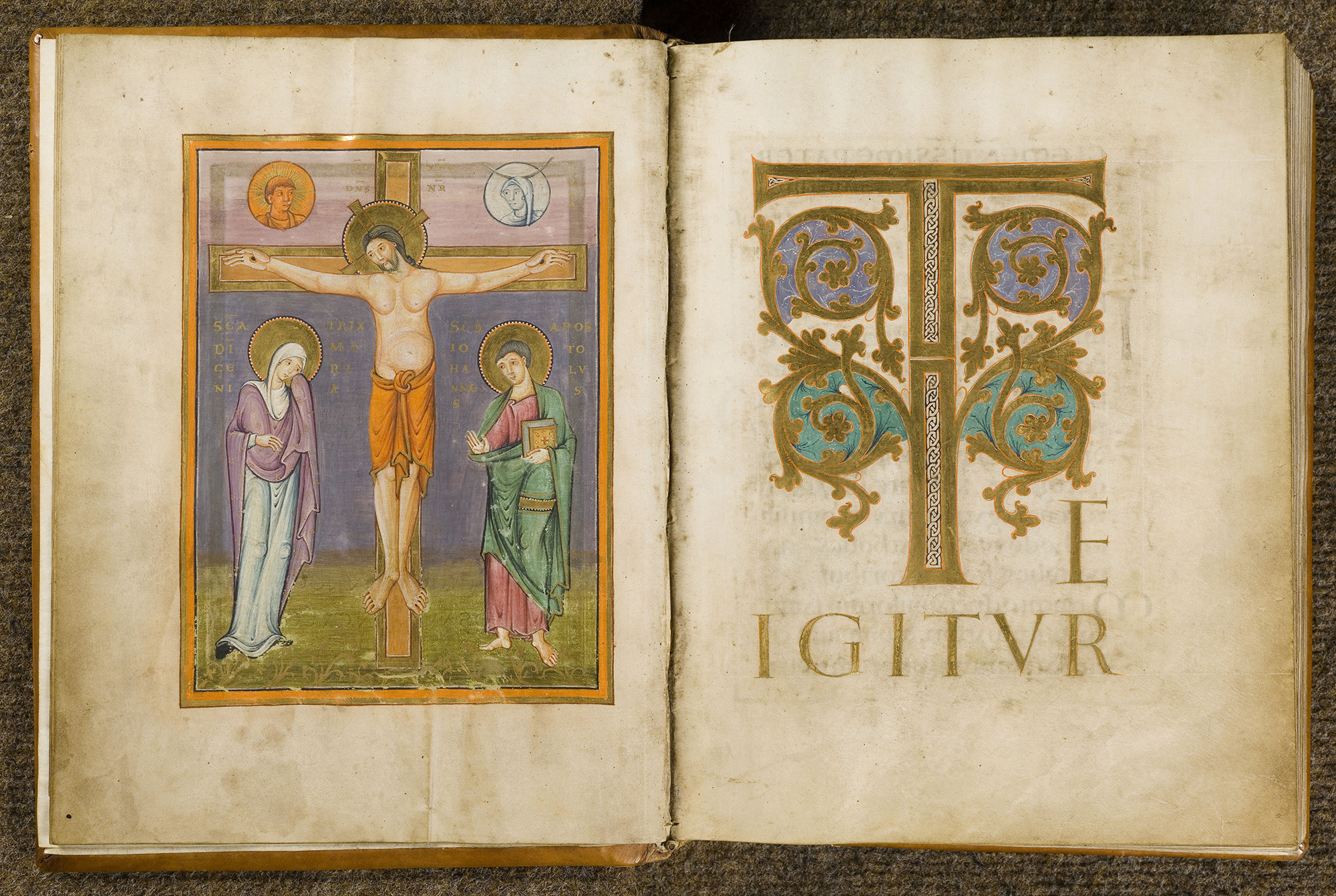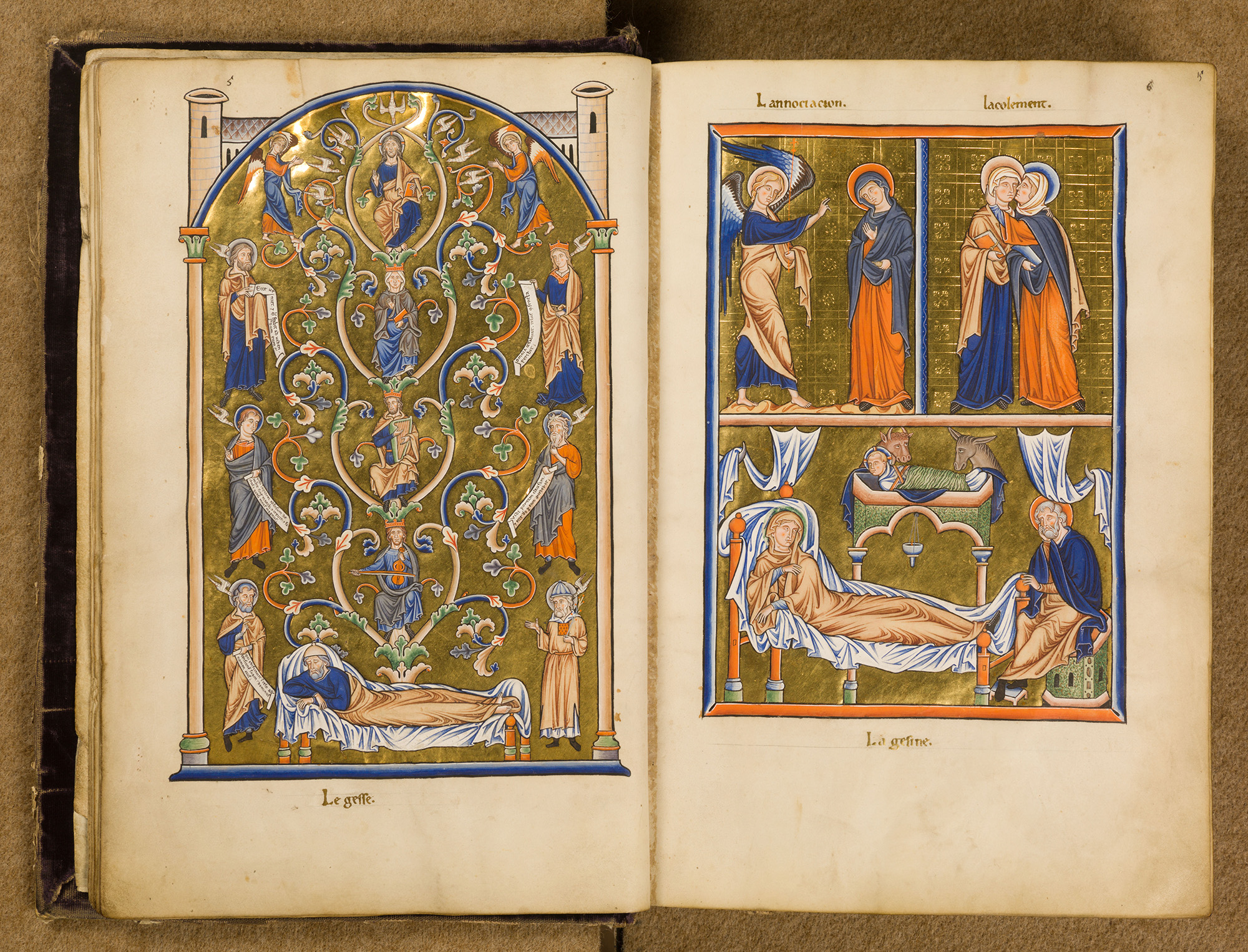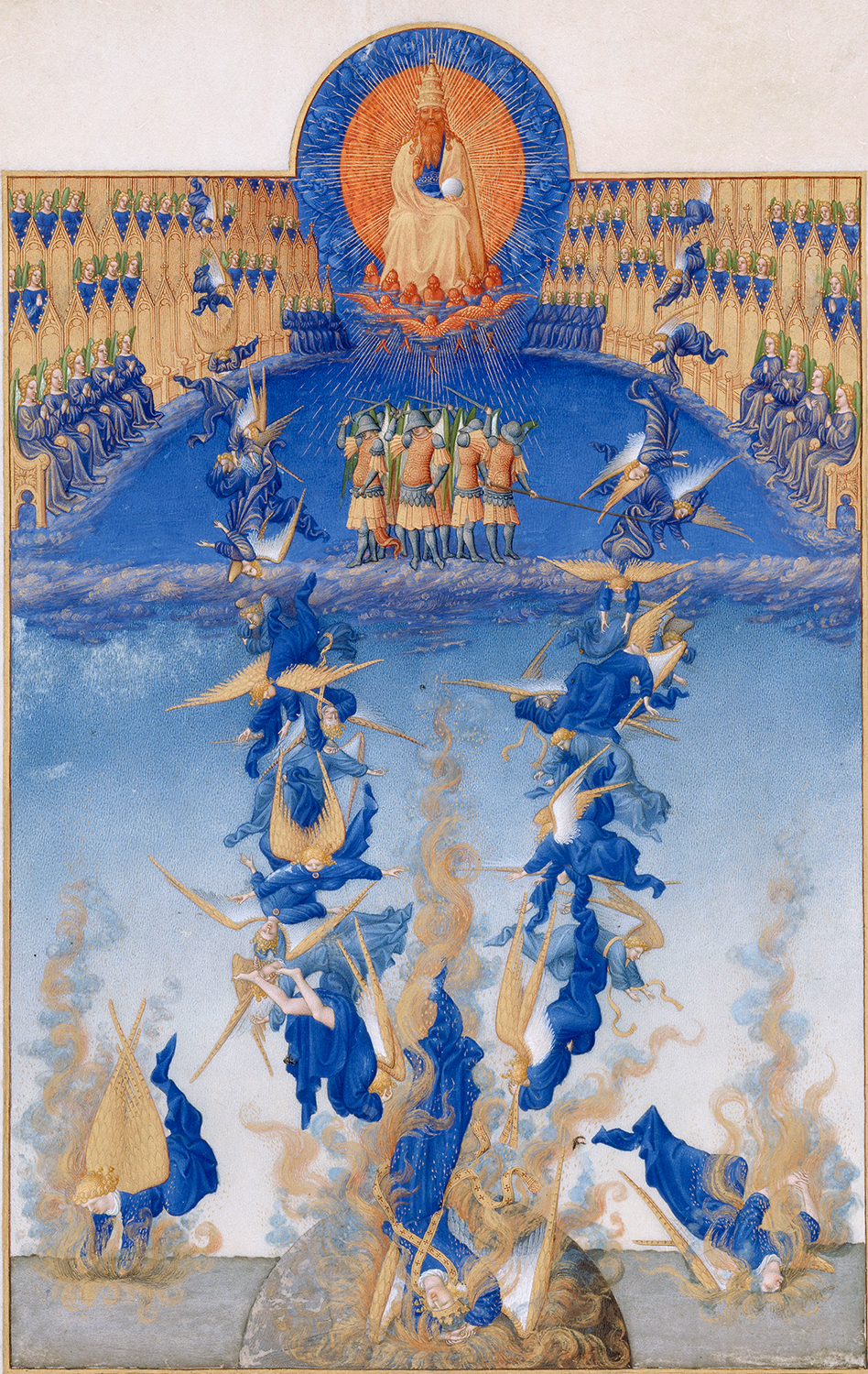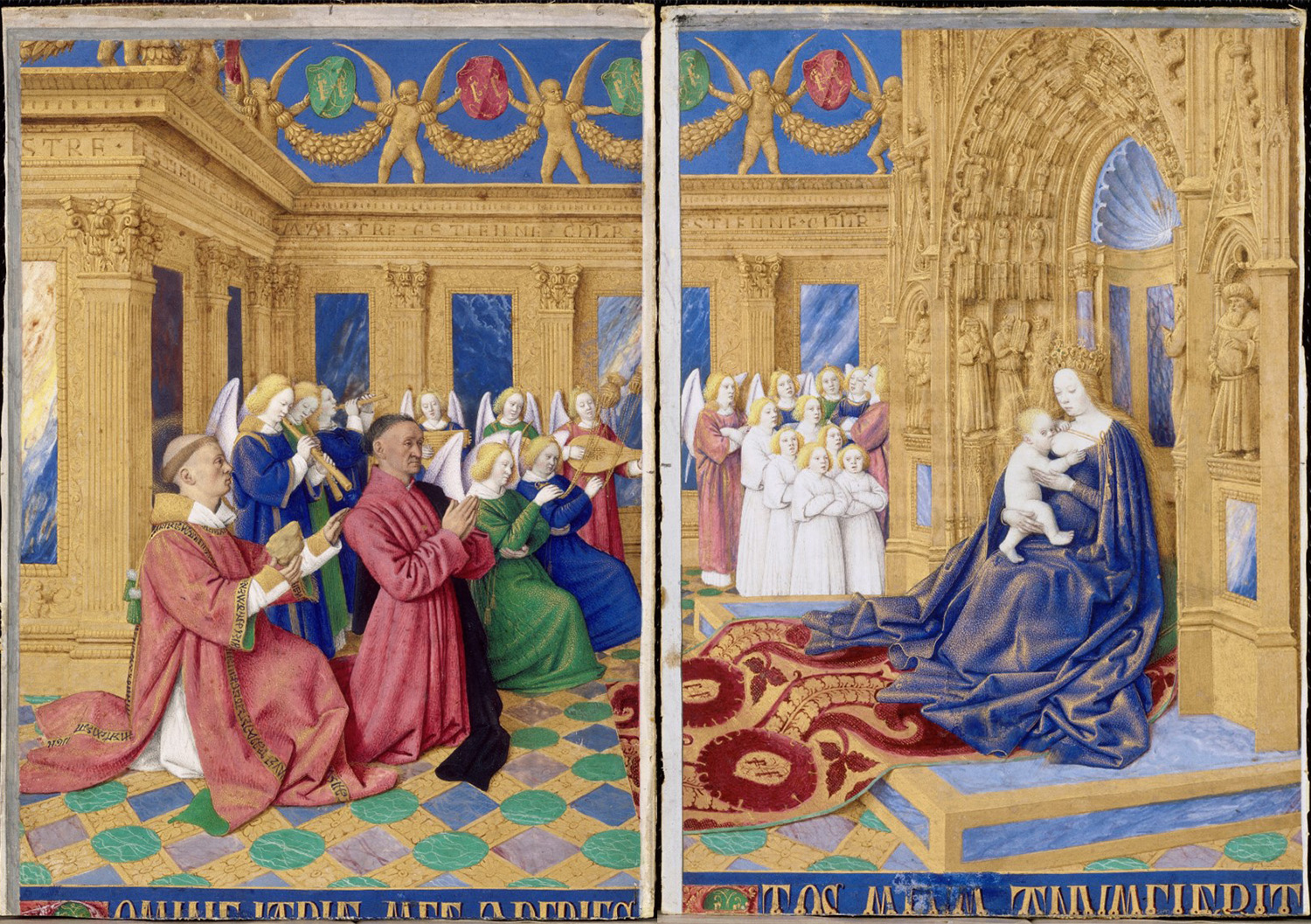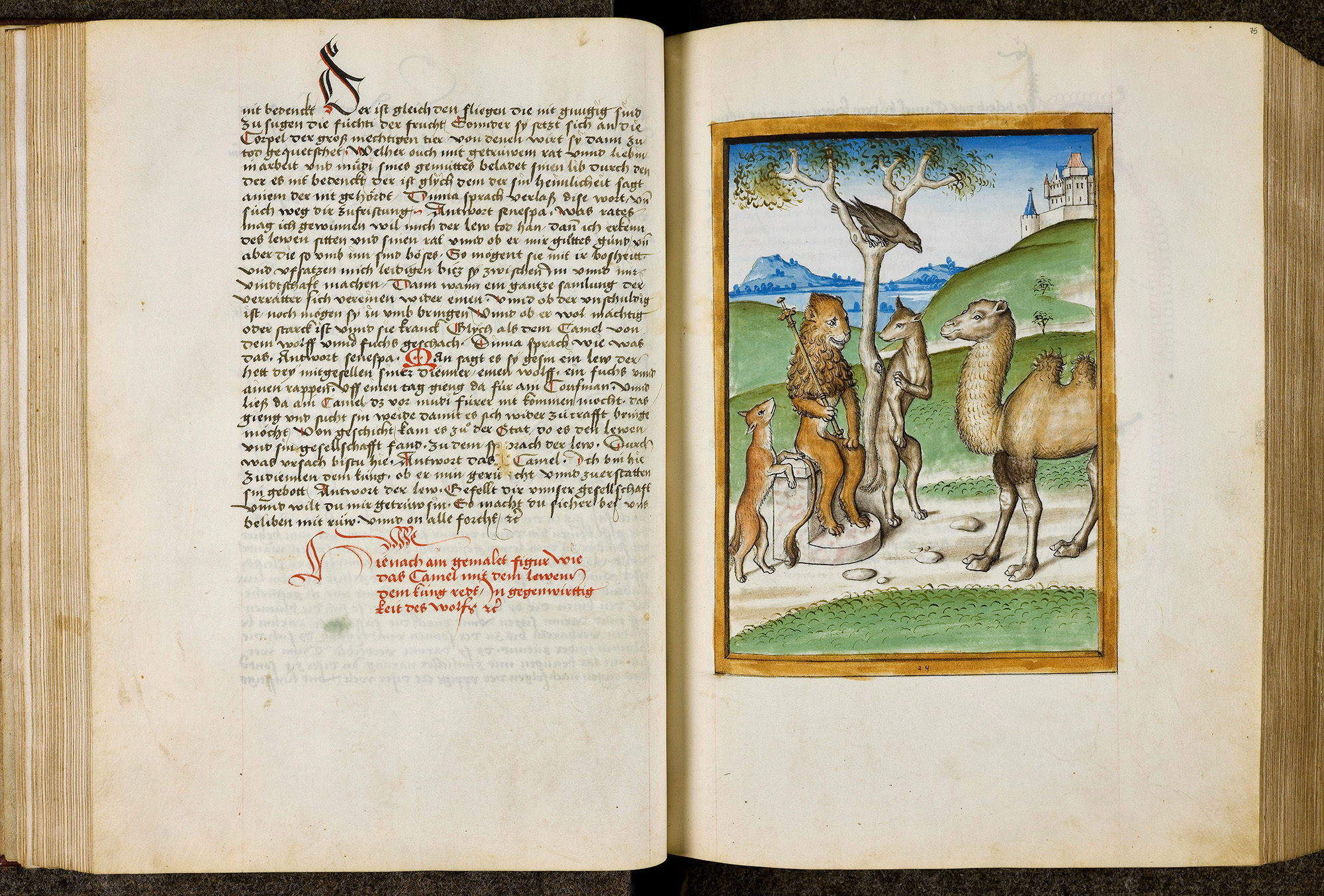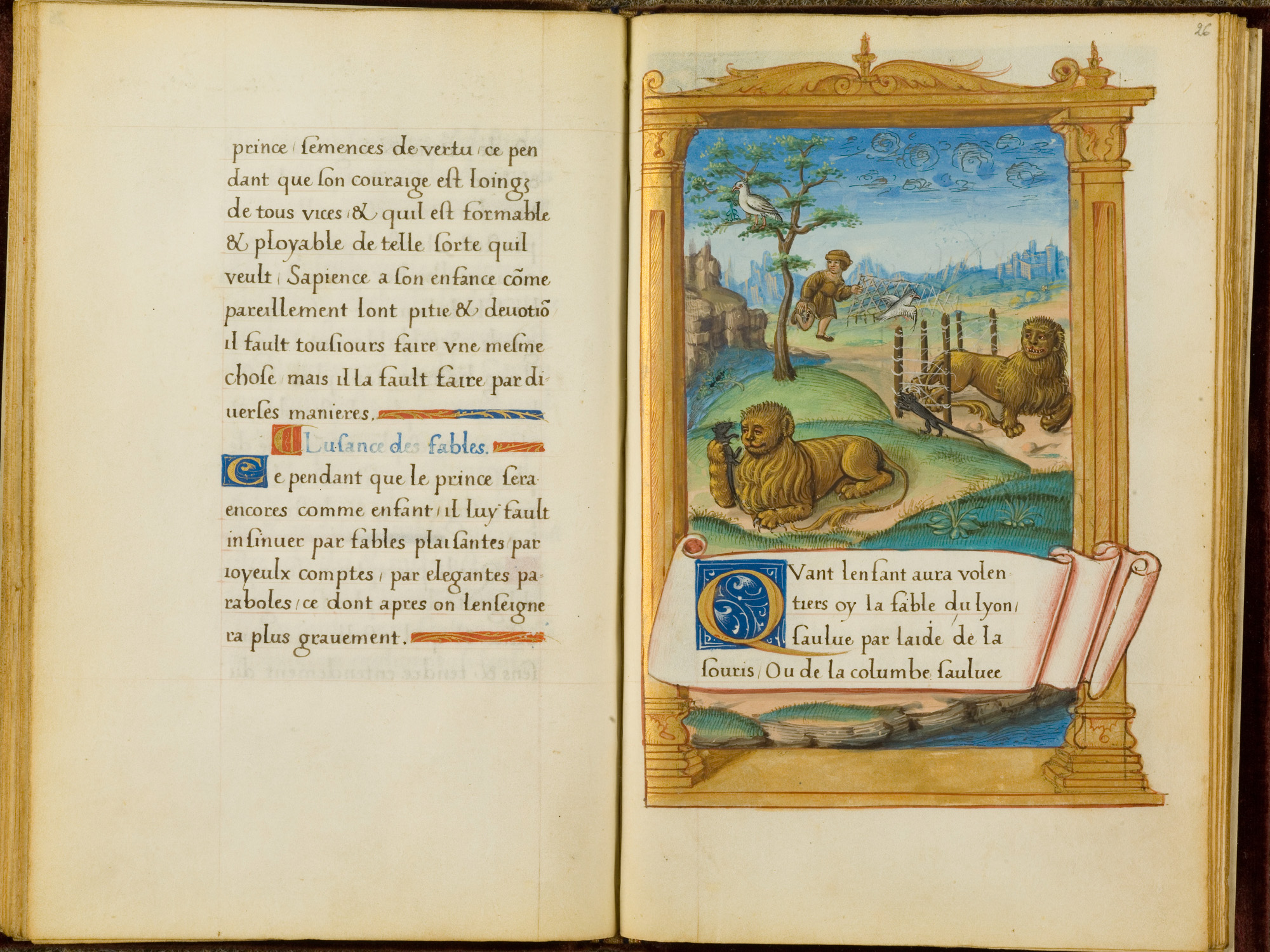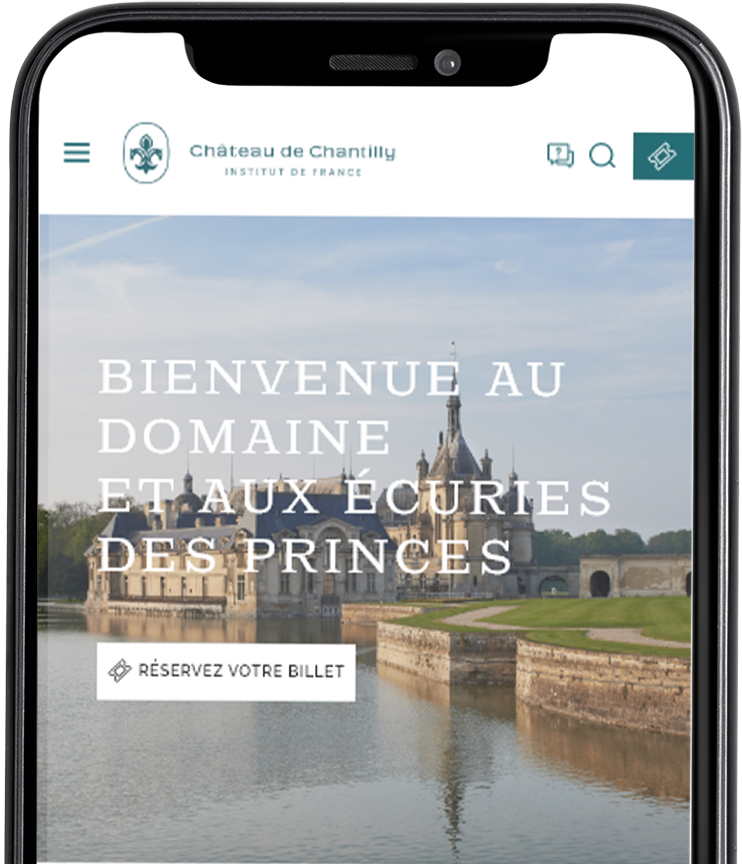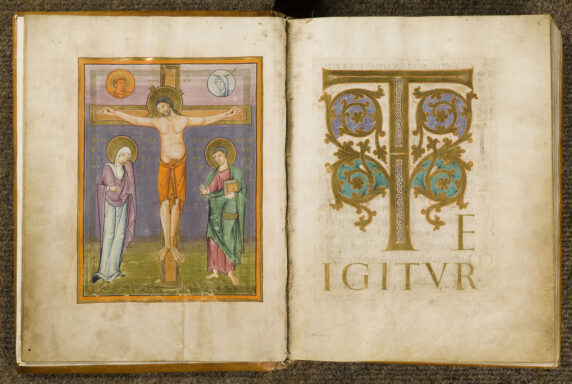
Sacramentary of Lorsch
10th century
Sacramentary of Lorsch - 10th century
222 sheets on parchment (h. 23.7 cm, l. 18 cm, 1 full page miniature
West Germany (Trier), 10th century
Origin: Lorsch Abbey (Diocese of Worms); purchased from the Boone bookshop, London, 1862
The Duke of Aumale, who was intent on creating a comprehensive overview of illumination from its origins, acquired a sacramentary – a liturgical book containing prayers and texts reserved for celebrants – which was characteristic of Carolingian and Ottonian productions.
The art of the early Middle Ages was at its peak here. Several pages are written in uncial writing, in small gold letters on purple parchment.
The harmony and elegance of the forms and colours characterise the art of the Registrum Gregorii Master, an illuminator from the Ottonian period who was active circa 980-996 in Trier.
See its pages here: https://bvmm.irht.cnrs.fr/iiif/219/canvas/canvas-146001/view

Portrait of Otto II
Circa 983
Portrait of Otto II - Circa 983
Sheet from a collection of letters by Gregory the Great, known as Registrum Gregorii, Trier, 10th century
Illumination pasted on cardboard, (27 cm X 19.8 cm)
Origin: J.C. Robinson collection, 1862
The oldest manuscript fragment in Chantilly is a sheet taken from the Registrum Gregorii, illuminated by an artist from the Trier School in the 10th century.
It depicts the Emperor Otto II (973-983) on his throne, surrounded by four allegorical female figures representing the provinces of Germania, Francia, Italia and Alamannia.
Inspired by classic ancient art and byzantine models, the portrait was probably produced when the Emperor was still alive or shortly after his death, commissioned by Egbert, Archbishop of Trier and a major patron of the Ottonian Renaissance.
The portrait, which was in the Rotunda of the Condé Museum for a long time, is now protected from light.

The Psalter of Ingeborg of Denmark, Queen of France
Circa 1218
The Psalter of Ingeborg of Denmark, Queen of France - Circa 1218
Paris Psalter, Northern France (Noyon or Soissons)
197 sheets on parchment (30 cm X 20 cm), 51 miniatures
Acquired by the Duke of Aumale from the Count de Lignac in 1892
The calendar in this psalter features notes on the deaths of those close to Ingeborg of Denmark (1175-1236), Queen of France and second wife of Philippe Auguste. It mentions the king’s victory at the battle of Bouvines on 27 July 1214. A victory that ensured the future of the Capetian dynasty and unity in the kingdom.
When Ingeborg died in 1236, the manuscript remained in the royal collections. A note from the 14th century indicates: “Ce psaultier fu saint Loys”. The brightly coloured miniatures with burnished gold backgrounds are of excellent quality.
See its pages here: https://bvmm.irht.cnrs.fr/iiif/182/canvas/canvas-122349/view
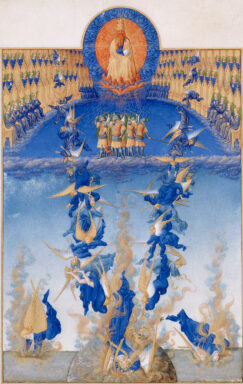
The Très Riches Heures du duc de Berry
1411-1489
The Très Riches Heures du duc de Berry - 1411-1489
15th century manuscript on vellum
206 sheets with two columns (30 cm X 21 cm)
66 large illuminations and 65 small illuminations
Red morocco binding featuring the Spinola and Serra families’ coats of arms, 18th century
The most precious manuscript in Chantilly is a book of prayers commissioned circa 1411 by Jean I, Duke of Berry, from the Limbourg brothers Paul, Johan and Herman, who died in 1416.
Throughout the 15th century, other illuminators worked in turn on this manuscript, such as Barthélémy d’Eyck for the royal family in circa 1440, or Jean Colombe in circa 1485 for Charles I, Duke of Savoy, who inherited the manuscript.
This treasure of international Gothic art features a mix of Flemish, French, Italian, Oriental and ancient influences.
From the time it was acquired by the Duke of Aumale in 1856, the book acquired a celebrity that is now worldwide, making it an icon of the Middle Ages.
See its pages here: https://bvmm.irht.cnrs.fr/iiif/22470/canvas/canvas-2045964/view

The Hours of Etienne Chevalier by Jean Fouquet
1450
The Hours of Etienne Chevalier by Jean Fouquet - 1450
15th century manuscript on vellum
40 illuminated sheets, (21 cm X 15 cm)
Acquired from the Brentano family in 1891
The Hours of Étienne Chevalier, painted by Jean Fouquet in the 1450s, profoundly renewed the art of illuminating books of Hours and marks the peak of the painter’s art.
Etienne Chevalier, treasurer to Charles VII, had himself depicted kneeling in front of the Blessed Virgin with his monogram “EE” repeated in almost all the miniatures.
Having remained in the treasurer’s family for a long time, the manuscript was split up in the 18th century and subsequently dispersed.
Forty sheets were acquired by the Duke of Aumale in 1891. The latter had the Santuario in his Château de Chantilly especially designed to exhibit the framed pages like real paintings.

Kalîla wa Dimna, translated by Anton von Pforr
Anton von Pforr
Circa 1480
Kalîla wa Dimna, translated by Anton von Pforr - Circa 1480
Artist : Anton von Pforr
Das Buch der Beispiele der alten Weisen, Urach (Swabia), 15th century (after 1476)
Manuscript enriched with a cycle of 132 miniatures on vellum
Manuscript 680
Origin: Eberhard V the Bearded, Count of Württemberg, London, 1860
This compilation, also called the Fables of Bidpaï, was composed in India before 570 and spread in the West from the 13th century in a Latin version.
It was intended for the moral education of princes.
At the end of the 15th century, a painter who was perhaps of Flemish origin renewed its illustration at the request of the Count of Württemberg, a bibliophile who commissioned the German translation.
See its pages here: https://bvmm.irht.cnrs.fr/iiif/391/canvas/canvas-215134/view

The education of a princes, by Erasmus
Erasmus
1526
The education of a princes, by Erasmus - 1526
Artist : Erasmus
Epithome ou Sommaire… de l’Institution d’ung prince chrestien jusques en l’eage d’adolescence
Manuscript on vellum, illuminated probably in Tours, 1526
Manuscript 316
Origin: J.J. de Bure auction, 1853
The Reading Room houses many princely manuscripts from the Renaissance.
This small book of instruction in French, dedicated to Louise of Savoy, was intended for the private tutors of the children of France at a time when they were sent as hostages to Charles V in Spain after the defeat of their father François I in in Pavia.
It contains 4 charming images from Aesop’s fables and the Adagia by Erasmus, (1469-1536), accompanied by instructions for their pedagogical interpretation.
See its pages here: https://bvmm.irht.cnrs.fr/iiif/307/canvas/canvas-184639/view

